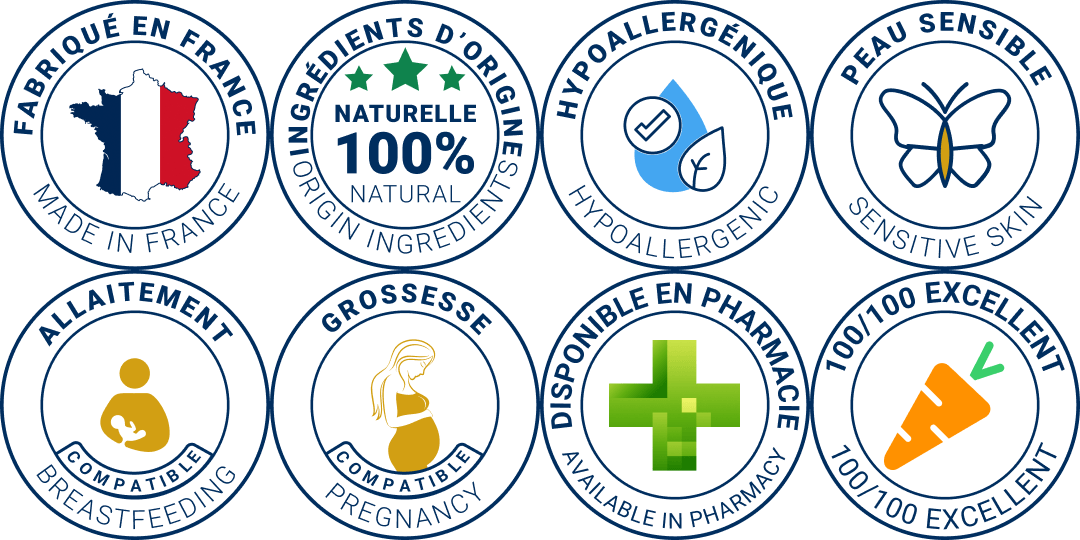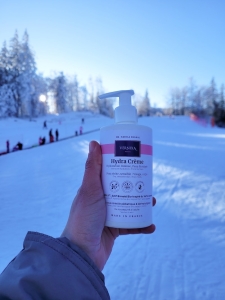Reading Time: mins
The world of cosmetics is constantly evolving, always seeking to combine efficacy and safety in its formulas. At the heart of this quest is Polysorbate-60, an emulsifier that plays a crucial role in both the food and cosmetics industries. It ensures better cohesion between the oily and aqueous components of products, guaranteeing a pleasant texture and optimal absorption. However, beyond its notable advantages, Polysorbate-60 raises a number of questions, notably concerning its manufacturing process and its impact on the environment and sensitive skin. This article aims to explore this ingredient in depth, shedding light on its usefulness, its manufacturing process and the precautions to be taken for respectful, conscious use.
Polysorbate-60 is a versatile emulsifier derived from a complex chemical reaction between sorbitol, ethylene oxide and stearic acid. This synthesis makes it possible to obtain a compound capable of uniting the hydrophilic and lipophilic parts of a formulation, thus facilitating a stable, homogeneous emulsion. Despite its effectiveness, the Polysorbate-60 manufacturing process raises ecological questions, due to the use of ethylene oxide, a compound known for its potential harmful effects on health and the environment. As a result, although Polysorbate-60 is widely used in many cosmetic and food products, its presence is often closely scrutinized by those concerned about the environmental and health impacts of their consumption.
Its application is not limited to cosmetics; it is also used in the food industry to stabilize the texture of products such as ice creams and sauces. However, its role in cosmetics is particularly appreciated for its solubilizing and dispersing properties, which promote even, effective application of products to the skin. Nevertheless, for people with sensitive or reactive skin, the inclusion of Polysorbate-60 in formulations may require extra vigilance, due to potential sensitization risks.
In skincare, Polysorbate-60 is valued for its ability to improve the texture and stability of formulations, making products more pleasant and easier to apply. This characteristic is essential for the creation of creams, lotions and other topical products that require an even distribution of active ingredients on the skin. In addition, its effectiveness as an emulsifier not only enhances the stability of finished products, but also optimizes the absorption of active ingredients by the skin. However, the use of Polysorbate-60 is not without consequences. Its production can involve chemical processes that give rise to concern for the environment and human health, notably through the use of ethylene oxide. That's why it's so important to choose products that have been rigorously tested and, if possible, to look for gentler, more ecologically responsible alternatives.
The presence of Polysorbate-60 in a wide range of products calls for particular vigilance, especially on the part of consumers with sensitive skin. We recommend reading product labels carefully, and choosing formulas specifically designed to minimize the risk of irritation. In addition, the choice of brands committed to sustainability, such as Vernixa, supports the research and development of innovative, effective skincare products that respect the environment and the health of users. In conclusion, Polysorbate-60 is a striking example of the challenges facing the cosmetics industry: reconciling performance and environmental responsibility. A nuanced understanding of its characteristics and implications enables consumers to make informed choices and opt for more sustainable consumption practices.
Discover a range of products that respect your skin and the environment at Vernixa, where innovation and nature meet for the very best in cosmetic care.


All Rights Reserved | Tous Droits Réservés GTIN Compliance Hydra Lavant | GTIN Compliance Hydra Crème



